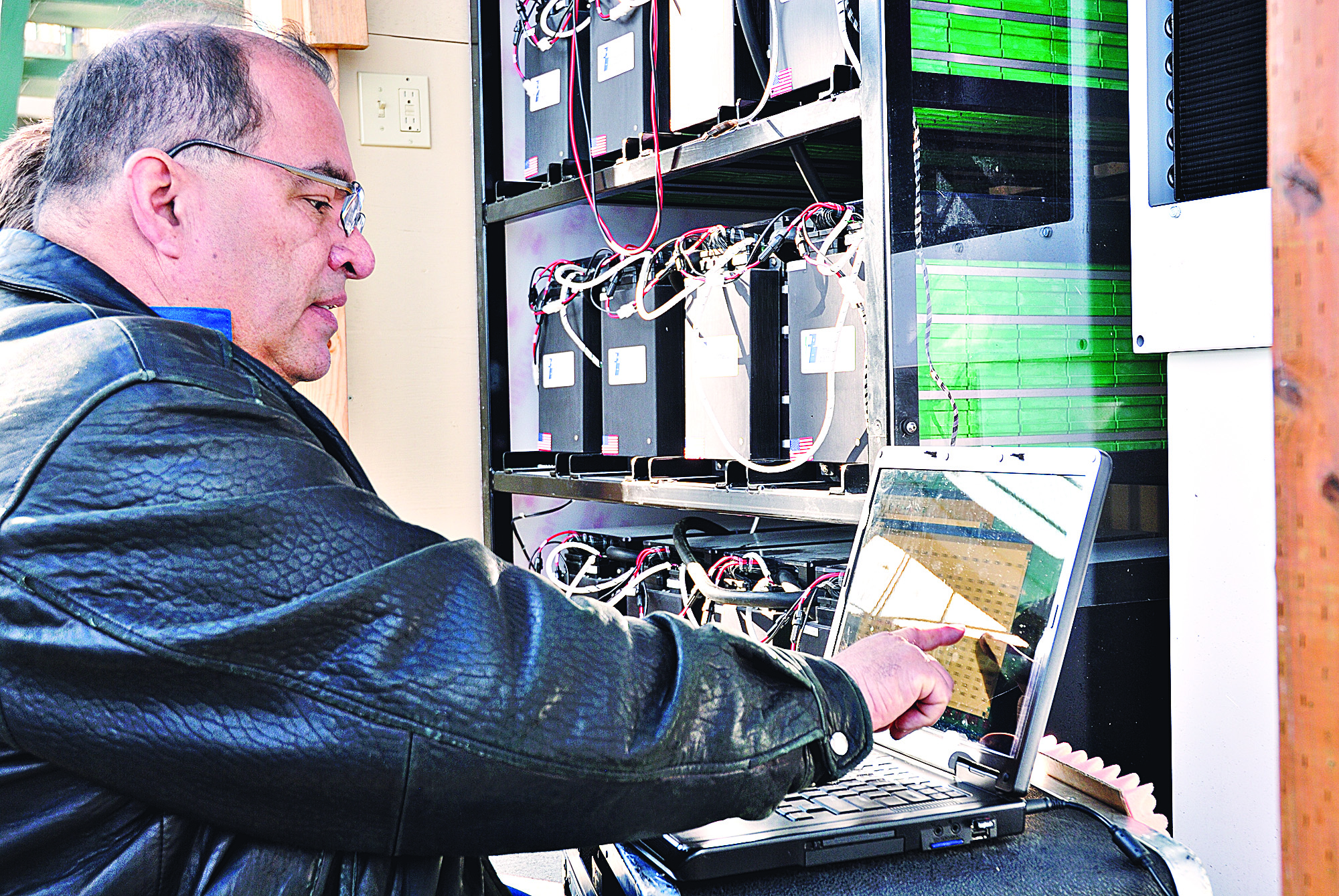PORT ANGELES — While Port Angeles remains behind on its project to install automated utility meters across the city, it continues to make a name for itself for its embrace of smart grid technology.
The city is one of 15 utilities in the Pacific Northwest participating in a Bonneville Power Administration pilot project aimed at reducing daily peaks in energy use that strain the power authority’s resources.
As part of the project, the city and other participating utilities are working with residents and businesses to control when they use power to reduce spikes in energy use.
The process, known as demand response, is part of efforts to move toward a smart grid, which can include automated responses to peaks and drops in energy demand.
What sets Port Angeles apart, said Lee Hall, BPA’s smart grid program manager, is its partnership with The Landing mall, 115 E. Railroad Ave., to use cutting-edge ways to store energy.
That technology: lithium-ion batteries, which can store large amounts of energy.
The batteries have been installed at the waterfront building and have been running well for the past three weeks, said Paul Cronauer, Landing Mall owner.
While the technology may not be entirely new, its application is.
Hall said it’s the only one he knows of in the region being used to manage a commercial building’s energy use.
That interests people like Hall because of its ability to store energy at night, when it’s less expensive to provide, and then power the building during times when energy use is at its highest demand.
If more businesses applied the technology, energy costs could be significantly reduced, he said.
It also has the ability to store energy when wind turbines are producing lots of power, which sometimes occurs during nighttime hours when there is the least demand.
“The city of Port Angeles is an outstanding partner,” Hall said.
“We are really excited about the possibilities.”
Phil Lusk, city power resources manager, said the batteries, which were installed by Port Angeles-based Catalyst Energy Technologies, can store 45 minutes’ worth of power for the building.
It costs $165,500, with approximately $8,000 from the city, $14,550 from The Landing mall, $60,000 from Catalyst and $82,550 from BPA, he said.
The city’s interest, Lusk said, is in lowering the cost of energy. That cost increases during peak-power periods.
“The more dollars we can save through conservation programs or demand response efforts means more money stays in our community,” Lusk said.
Cronauer said he was more than happy to test the technology on his building.
“My idea is kind of to have The Landing mall be a laboratory for energy conservation and just cutting-edge technology,” he said.
Cronauer also uses a small wind turbine to help power the building.
He plans to have solar panels and another wind turbine installed within the next few months.
As part of the mostly BPA-funded pilot project, the city also is installing devices that can control water heaters and thermostats in participating homes. During peak-energy periods, the city would send a signal to those devices to temporarily shut off.
Fifty devices were scheduled to be installed last year, but only 35 have been put into place due to delays with the city’s smart-meter installation program.
Lusk said the city plans to first use the 35 devices, all water-heater controls, in mid-March.
The devices are installed with the residents’ consent.
Lusk said a few other businesses, such as Port Angeles Hardwood and Nippon Paper Industries USA, also are participating in the pilot project but aren’t using any new technology.
Rather, their plan is to shift energy-intensive operations to different times of the day to avoid contributing to large peaks in energy use.
Olympic Medical Center also is a participant.
While steps are being made, a shift to a “smart grid” is not going to happen overnight, Lusk said.
“We’re taking very small baby steps,” he said.
“But we’re on our way to understanding how demand response integrates into the city’s electric system.”
________
Reporter Tom Callis can be reached at 360-417-3532 or at tom.callis@peninsuladailynews.com.
